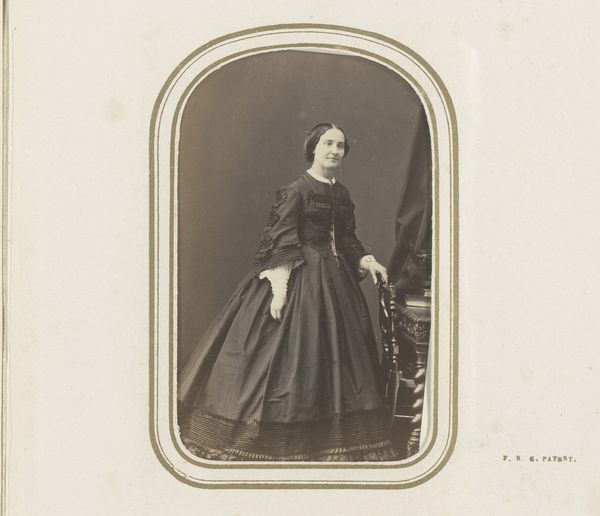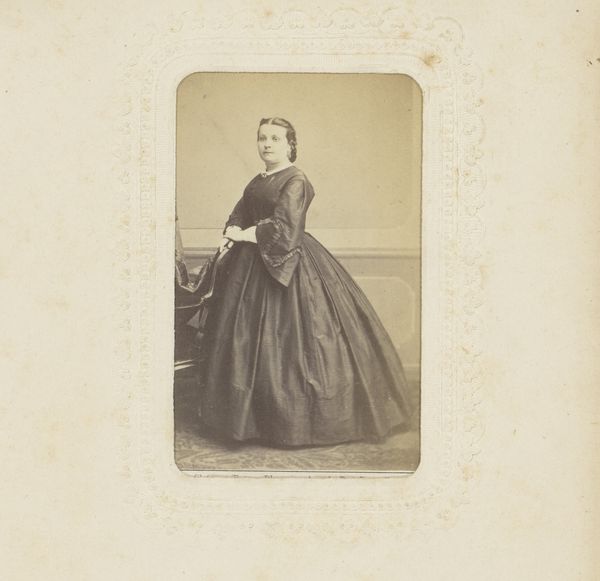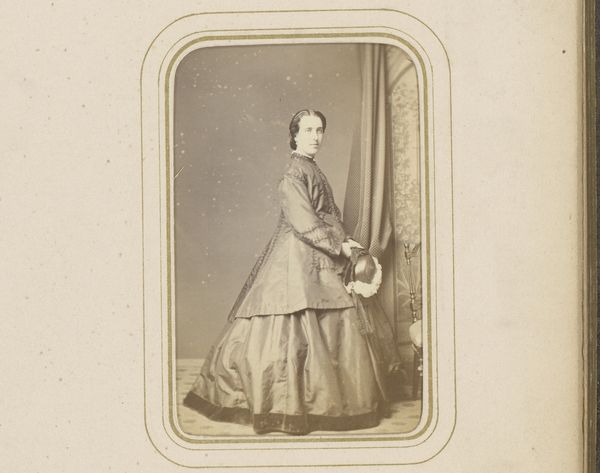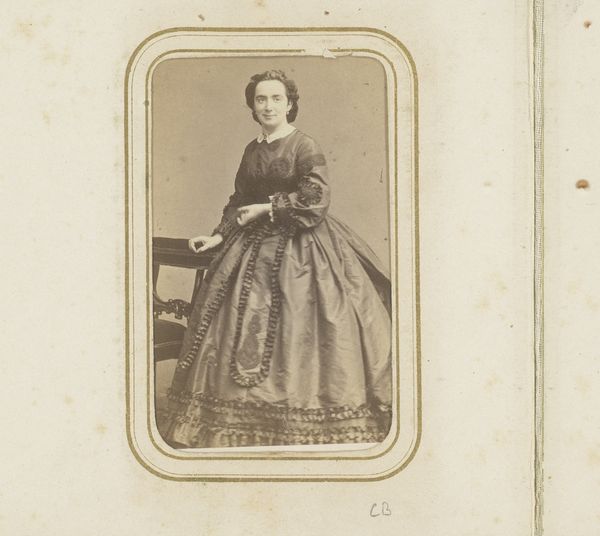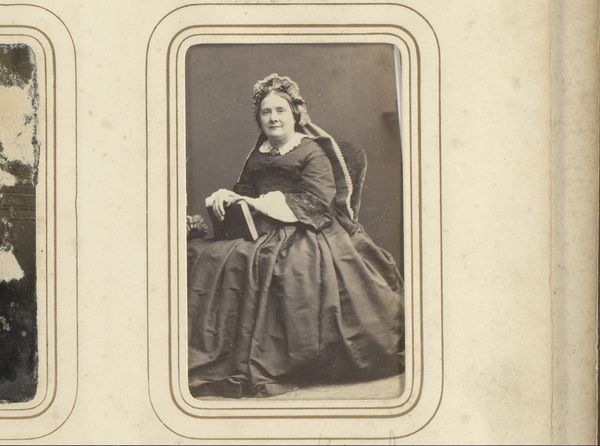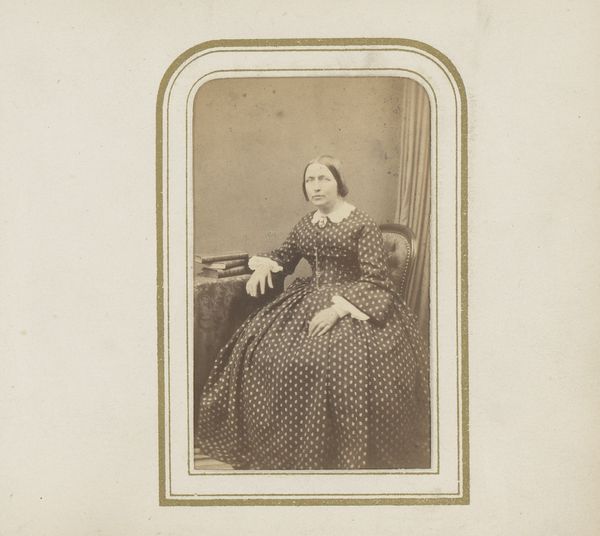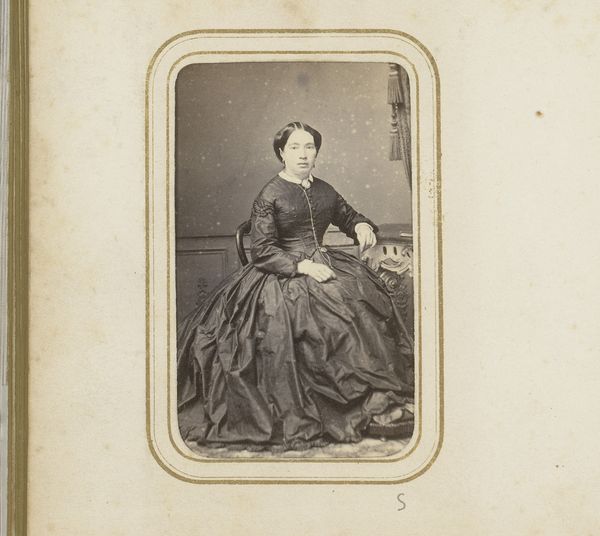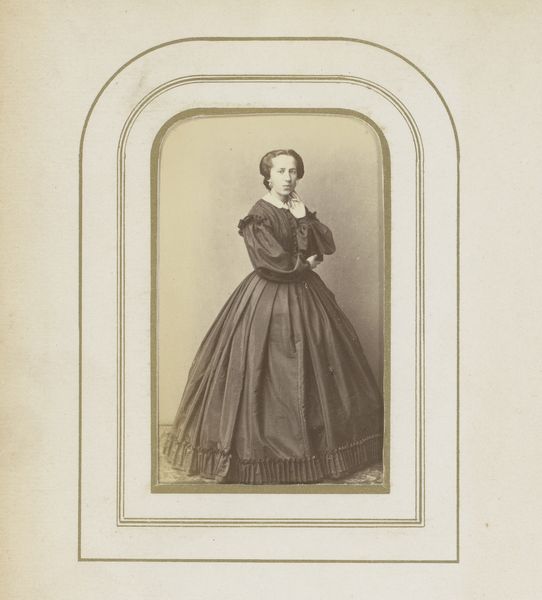
photography, gelatin-silver-print
#
portrait
#
archive photography
#
photography
#
historical photography
#
historical fashion
#
gelatin-silver-print
#
19th century
Dimensions: height 86 mm, width 53 mm
Copyright: Rijks Museum: Open Domain
Curator: Let’s examine "Portret van een vrouw, leunend op een stoel" – or "Portrait of a Woman, Leaning on a Chair." This gelatin silver print was taken sometime between 1850 and 1890 by Carjat et Cie. Editor: It’s remarkably melancholic. Her gaze, though direct, feels heavy, and the tones only deepen that sentiment. What stands out to me most is her enormous gown, dwarfing her. Curator: Absolutely. Think of the labour involved in creating a dress of that scale in this period – the weaving of the fabric, the intricate lace detailing, the construction itself. These details aren’t just aesthetic choices. Editor: But consider the social symbolism tied to this woman's dress, perhaps. The visual language speaks to the period’s expectations of women and the constraints they experienced, no? It's like she is weighted down by societal expectations. The very act of photographing – preserving this moment for posterity – speaks volumes. Curator: A compelling point. Perhaps we can investigate how photographic studios created the context of that dress for women of a certain social position. Consider also the photographic chemistry involved. It’s a meticulous process, coating glass plates with light-sensitive emulsion, the darkroom… a far cry from our instant digital images today. Editor: But she’s looking directly at us. The technology captures her likeness for perpetuity and gives symbolic weight. What do you imagine the woman wants us to consider? Does she want to show how grand she can present, or perhaps show her sadness from not meeting that very image? Curator: And that photographic preservation itself contributes to a constructed historical narrative. It’s vital to consider who had the access to commission such a portrait, shaping the very memory we have of that period. Her garments reflect production processes tied into both high-end tailoring and global commodity networks. Editor: Both these perspectives show me different things to consider about women in 19th century society, her social and economical context for consideration and how symbolism could convey emotional, historical context as well. Curator: Precisely, reminding us to continually challenge dominant historical narratives around wealth, access, and material life. Editor: Absolutely. A dialogue with this image provides so much richer viewing, doesn't it?
Comments
No comments
Be the first to comment and join the conversation on the ultimate creative platform.
